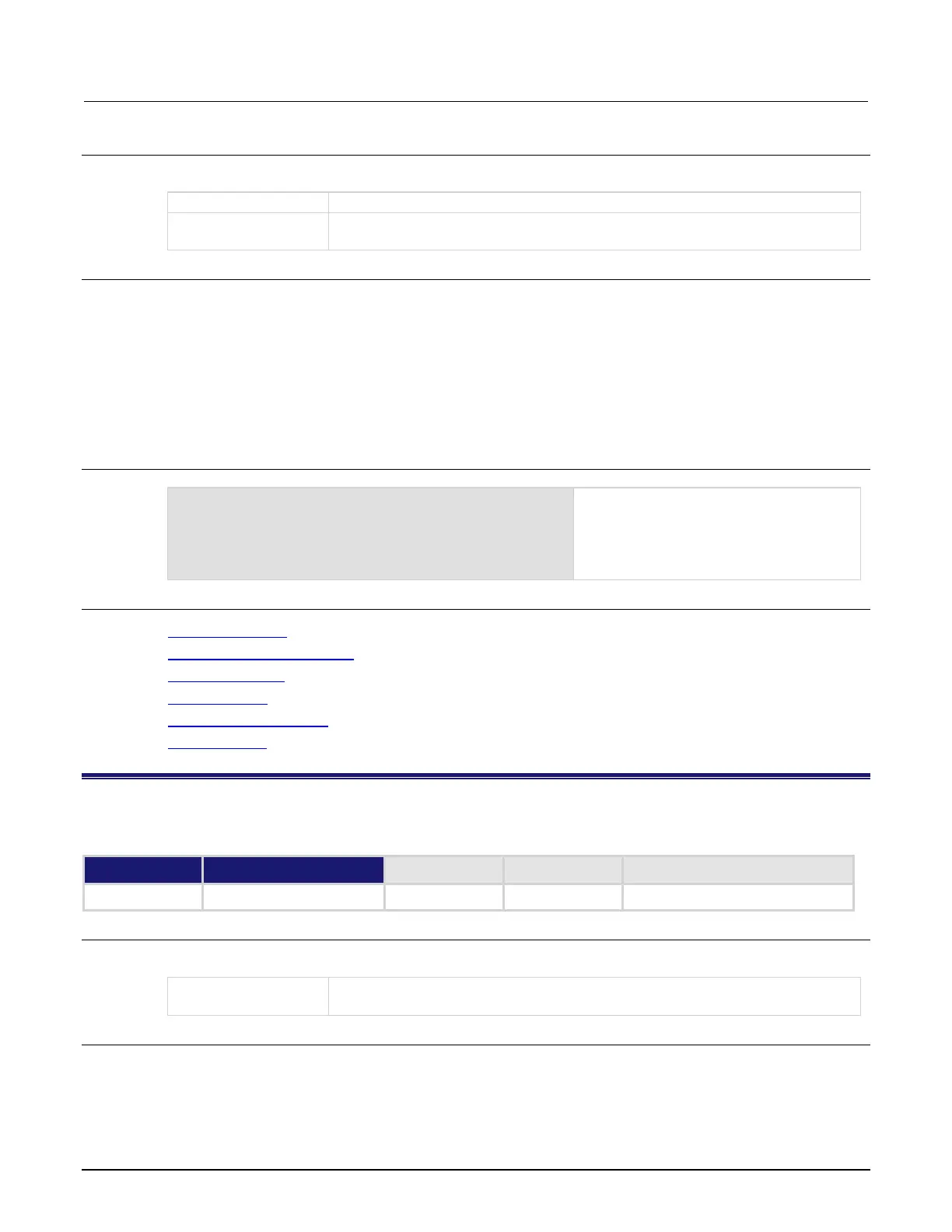Model 2651A High Power System SourceMeter® Instrument Reference Manual Section 7: Command reference
2651A-901-01 Rev. A / March 2011 7-19
Usage
maxNumber = bufferVar.capacity
maxNumber
The maximum number of readings the buffer can store
bufferVar
The reading buffer; can be a dynamically allocated buffer (user-defined), or a
dedicated reading buffer (such as smua.nvbuffer1)
Details
This read-only attribute reads the number of readings that can be stored in the buffer.
The buffer's capacity does not change as readings fill the buffer. A dedicated reading buffer that only collects
basic items can store over 140,000 readings. Turning on additional collection items, such as timestamps and
source values, decreases the capacity of a dedicated reading buffer (for example, smua.nvbuffer1), but does
not change the capacity of a user-defined dynamically allocated buffer. A user-defined dynamically allocated
buffer has a fixed capacity that is set when the buffer is created.
See the smuX.nvbufferY attribute for details on accessing dedicated reading buffers. See the
smuX.makebuffer() function for information on creating user-defined dynamically allocated reading buffers.
Example
maxNumber = smua.nvbuffer1.capacity
print(capacity)
Reads the capacity of dedicated reading
buffer 1.
Output: 1.49789e+05
The above output indicates that the buffer
can hold 149789 readings.
Also see
smuX.makebuffer() (on page 7-189)
smuX.measure.overlappedY() (on page 7-201)
smuX.measure.Y()
(on page 7-205)
smuX.nvbufferY
(on page 7-208)
smuX.trigger.measure.Y()
(on page 7-238)
Reading buffers
(on page 3-6)
bufferVar.clear()
This function clears the buffer.
Type TSP-Link accessible
Affected by Where saved Default value
Function Yes
Usage
bufferVar.clear()
bufferVar
The reading buffer; this can be a dynamically allocated buffer (user defined), or a
dedicated reading buffer (such as smua.nvbuffer1)
Details
This function clears all readings from the specified buffer.

